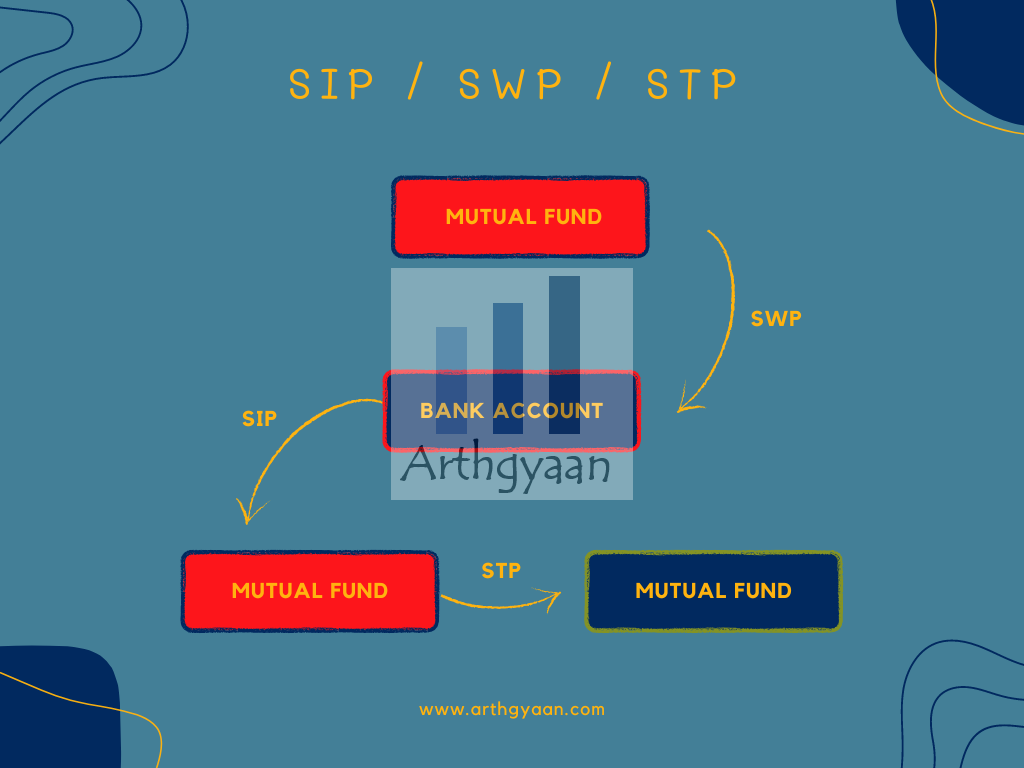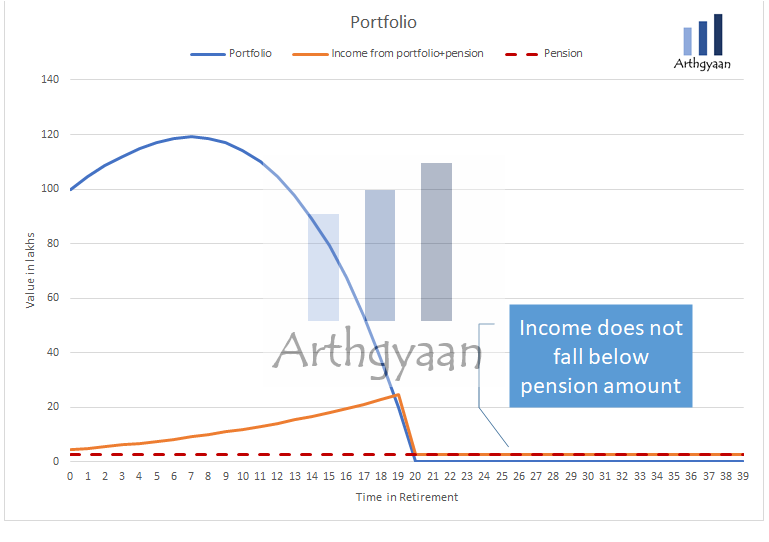How to mix an SWP from an equity mutual fund with a pension plan in retirement?
This article shows how much you can withdraw from an equity mutual fund if you have a pension plan as well in retirement.
This article shows how much you can withdraw from an equity mutual fund if you have a pension plan as well in retirement.

This article is a part of our detailed article series on Safe Withdrawal Rates. Ensure you have read the other parts here:
This article brings together the interrelationship between the size of the retirement corpus, inflation, asset returns, longevity and the amount you wish to spend in retirement.
We examine the results of running a long-term SWP in index funds for retirement.
This article shows that if you decide to retire today, how long will the corpus last realistically based on real rates of return.
This article shows the maximum withdrawal in SWP form that you can take out from a retirement portfolio to make it last 30 years.
The article investigates if you can retire in India with only 25x your expenses saved as retirement corpus.
One good example is NPS investors who will need to utilize at least 40% of their NPS corpus as an annuity when they withdraw at 60. The remaining NPS corpus may be invested in any product of choice.
Another example of such portfolios belongs to investors who have:
We will consider below an investor who has decided to invest 40% of their retirement corpus at age 60 into a 5%/year annuity taxable at 30%, while the remaining 60% of the portfolio is invested into an equity index fund.
The annuity will fund a part of the monthly expenses while the rest will come out of the equity mutual fund via SWP. Due to the lack of data for the Indian market, we use Monte Carlo simulation using Nifty 50 Total returns index data since 1999 to model 1,000 retirement paths for SWR ranging from 1% to 5% at 0.5% intervals.

All of these are standing instructions that get executed as per a schedule you specify:
In this article, we will see if you can have an SWP during retirement to fund in-retirement expenses and see what happens if there is a pension plan. Here the success criterion is:
There is a caveat that the pension plan will continue to pay throughout retirement, until the day you die, even if the equity corpus goes down to zero.

As we see in the diagram, the blue part is the retirement corpus that first rises and then falls. The red dashed line is the pension income that becomes a floor value for income in retirement. No matter how much the rest of the corpus fluctuates, the income does not go down to zero. However, due to inflation and tax, the value of the pension may not be much. If we assume a 7% inflation rate, the value of a ₹50,000/month pension, which requires an investment of ₹1.4 crores approximately at 5% returns and a 15% effective tax rate,
Therefore, even when the starting value is decent, the purchasing power of the annuity drops rapidly with time.
We will assume that the first year’s withdrawal to be a value between 1% and 5%. The withdrawal amount will be increased by inflation every year. As a practical example, we will take
| Start | ₹ 1,00,00,000 | Net withdrawal from MF |
|---|---|---|
| Withdrawals ⬇️ | – | – |
| Year 1 | ₹ 2,50,000 - ₹ 1,40,000 | ₹1,10,000 |
| Year 2 | ₹ 2,67,500 - ₹ 1,40,000 | ₹1,27,500 |
| Year 3 | ₹ 2,86,225 - ₹ 1,40,000 | ₹1,46,225 |
| Year 4 | ₹ 3,06,261 - ₹ 1,40,000 | ₹1,66,261 |
| Year 5 | ₹ 3,27,699 - ₹ 1,40,000 | ₹1,87,699 |
We define “success” as ending with a non-zero portfolio, i.e. not running out of money, after a 30-year retirement with an SWR between 1% and 5%. As per the definition of SWR, the starting portfolio value is 1/SWR. So in terms of the first year’s expenses, a 4% SWR is 1/4% = 25x expenses.
You can use this step-up SWP calculator to see how such a fixed-return SWP works in theory:
Total Withdrawal (₹):
Remaining Value (₹):
Inflation-Adjusted Value (₹):
Uncertainty-Adjusted Range (₹):
If you found this useful, check out the Arthgyaan step-up SIP calculator.This case leaves behind a ₹4 crores corpus for the heirs.
This case runs out of money around 3/4th time into retirement.
However, given that the pension is active, the family continues to earn ₹140,000/year as a pension.
We ran 1,000 such simulations for each of the SWRs (1-5%) and calculated the number of cases where there is a non-zero portfolio value after 30 years with a starting portfolio value of one crore.
Here the “Nearly failed” case is equal to an ending value less than or equal to one-fourth of the starting value. Since the starting portfolio is ₹1 crore, any ending value less than ₹25 lakhs is a near-miss. At 7% inflation, this ₹25 lakhs has lost its purchasing power to just ₹3.2 lakhs in 30 years and will, depending on the SWR, pay for only a few months to a year of retirement expense in the 31st year.
We also compare against the same simulation with the same data but with 100% of the portfolio in the Nifty 50 index fund as described in this article: What happens if you do an SWP from an index fund in retirement?.
The conclusion is quite clear:
If you are investing a lot in NPS for retirement, ensure that you accumulate enough to reach the stage when the SWR is low enough. If it is not, you will reach an unenviable position when you are forced to take the annuity and that makes it even less likely to complete retirement successfully.
The following article takes a different approach. Instead of a fixed percentage SWP, it implements a variable one equal to the dividend yield of the equity portfolio and uses those dividends to buy a pension plan every year.
How to get guaranteed income in retirement by combining dividends and pension?
1. Email me with any questions.
2. Use our goal-based investing template to prepare a financial plan for yourself.Don't forget to share this article on WhatsApp or Twitter or post this to Facebook.
Discuss this post with us via Facebook or get regular bite-sized updates on Twitter.
More posts...Disclaimer: Content on this site is for educational purpose only and is not financial advice. Nothing on this site should be construed as an offer or recommendation to buy/sell any financial product or service. Please consult a registered investment advisor before making any investments.
This post titled How to mix an SWP from an equity mutual fund with a pension plan in retirement? first appeared on 09 Oct 2022 at https://arthgyaan.com